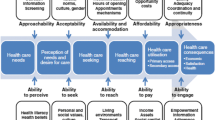Abstract
The Ontario Region of the Medical Services Branch, Health Canada, comprises approximately 63,000 First Nations people living on reserve in 126 First Nations communities. As of January 1997, 39% of these communities have either assumed control of the delivery of health services or are in transfer negotiations with the federal government. Another 17% have entered into an Integrated Community Based Health Services Agreement with the federal government, which could culminate in a full transfer agreement. In order to provide First Nations with timely access to health information for case management, program planning and evaluation, and the development of their own program priorities at the community level, Medical Services Branch, Ontario Region, has worked in partnership with First Nations to develop a comprehensive, computerized Health Information System (HIS). With direct access to a reliable epidemiological database, First Nations will be able to re-profile available resources in response to their own identified community health priorities.
Résumé
La Direction générale des services médicaux de Santé Canada pour la région de l’Ontario comprend environ 63 000 personnes des Premières nations qui vivent dans 126 communautés des Premières nations. En janvier 1997, 39% de ces communautés assumaient le contrôle de la prestation des soins de santé ou négociaient avec le gouvernement fédéral le transfert de ces services. Un autre 17% a conclu avec le gouvernement fédéral des accords en matière de services communautaires intégrés, qui peuvent aboutir à un accord de transfert complet. Pour permettre aux Premières nations d’accéder en temps utile à l’information sur la santé, en vue de la gestion des cas, de la planification et de l’évaluation des programmes et de la fixation de leurs priorités de programme au niveau communautaire, la Direction générale des services médicaux de la région de l’Ontario a travaillé en partenariat avec les Premières nations à mettre au point un vaste Système informatisé d’information sur la santé. Ayant accès directement à une base de données épidémiologique fiable, les Premières nations pourront réaménager les ressources disponibles en fonction des priorités de la santé communautaire qu’elles auront elles-mêmes fixées.
Similar content being viewed by others
References
Medical Services Branch, Health Canada. A Handbook for First Nations on Evaluating Health Programs. Ottawa: Supply and Services Canada, 1993
Medical Services Branch, Health Canada. Pathways to First Nation Control: Report of Project 07 — Strategic Planning Exercise. Ottawa: Program Policy and Planning Directorate, 1995.
National Advisory Committee on Immunization. Canadian Immunization Guide, fourth edition. Ottawa: Minister of Supply and Services Canada, 1993.
Government of Ontario. Health Protection and Promotion Act, 1983. Toronto: Gerard J. M. Raymond, Queen’s Printer for Ontario.
Advisory Committee on Epidemiology. Canadian Communicable Disease Surveillance System — disease-specific case definitions and surveillance methods. Can Dis Wkly Rep 1991;17S3.
World Health Organization. International Classification of Diseases (1975 Revision). Geneva: World Health Organization, 1977.
American Psychiatric Association. Diagnostic and Statistical Manual of Mental Disorders, fourth edition. Washington, DC: American Psychiatric Association, 1994.
Ontario Ministry of Health. Antenatal Record 1, October 1992.
Ontario Ministry of Health. Antenatal Record 2, December 1992.
Federal-Provincial Advisory Committee on Environmental and Occupational Health. Guidelines for Canadian Drinking Water Quality (Fourth Edition). Ottawa: Canada Communication Group, 1991.
Author information
Authors and Affiliations
Rights and permissions
About this article
Cite this article
Johnson, R.J. The Development of a Computerized Health Information System to Facilitate Program Planning/Evaluation and Enhanced First Nations Control of Community Health Services. Can J Public Health 88, 207–209 (1997). https://doi.org/10.1007/BF03403889
Received:
Accepted:
Published:
Issue Date:
DOI: https://doi.org/10.1007/BF03403889




